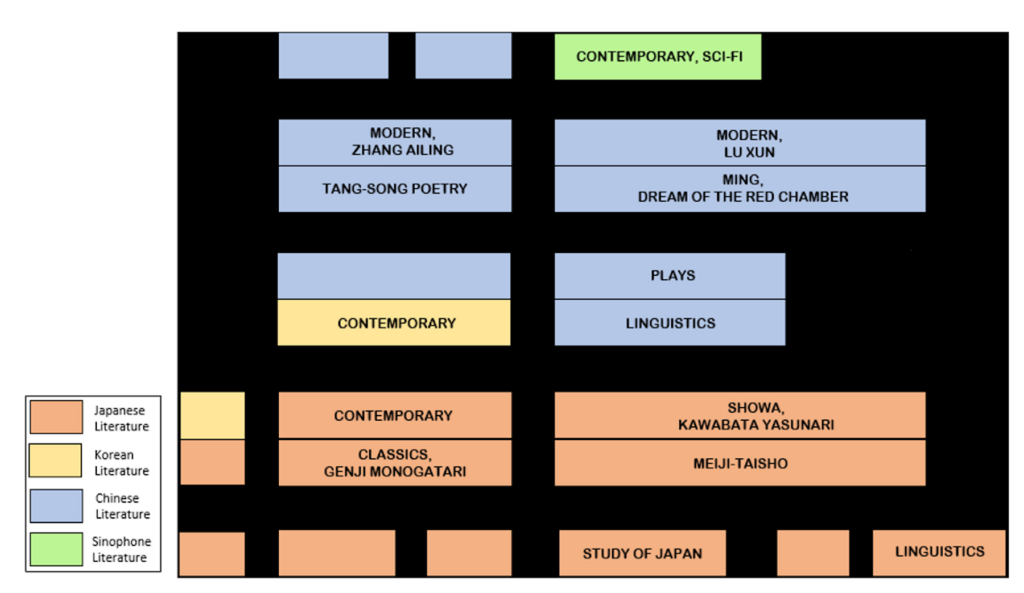
What’s New at the East Asian Library
New season, new armchairs and laptop stands, new reading room desks, and cushioned seats. New library organization, new browsing experience. Welcome to spring at the East Asian Library.
The sun will warm the seats of the two new armchairs by the windowed alcove. (If you like seats on the firmer side, these are for you.) For a more secluded, green space, book a slot in the group study room with its new moveable desks, seating a maximum of eight people. (Remember: no food!)

We’ve finally finished our book reshifting project, so I’ll break it down for you—where to find new books, where books are newly found now.
In brief:
Basement: local histories, science, military
First floor: literature
(Japanese, Korean, Chinese, Sinophone)
Second floor: general history, society, arts
Third floor: journals, religion, philosophy
Other large sets and various dictionaries are interspersed throughout the general study area against the walls (known as the “reading room” on the catalog). We’re happy to help you find a book anytime.
Below, our library workers have produced a simplified schema of the first and second-floor layout (the most popular floors).
First floor, color-coded by genre. As you enter from the Japanese linguistics side, you’ll pass by literature collections chronologically arranged in a “U” shape, from classical literature (such as Genji Monogatari) to contemporary Japanese fiction by the far window. Our growing Korean literature collection continues from the contemporary era in yellow, followed by the Chinese and Sinophone literature and literary studies on the right half of the first floor. Similarly, the Chinese texts are arranged from linguistics to dynastic collections of poetry followed by prose, with contemporary Sinophone authors on the shelf nearest to the elevator, housing a vibrant science-fiction and thriller selection (in green below).

Second floor, color-coded by subject. Taking the stairs up one floor, you’ll find the social sciences and arts, organized with Chinese history on the left, Taiwanese, Japanese, and Korean history in the middle, and subjects on the right side with all languages shelved together. On the lower right, near the balcony, you’ll find our section on cinema studies, as well as children’s literature and popular culture studies.


We hope these changes will make studying, researching and reading feel more organic and intuitive. If you get into a slump or hit a wall, you can always take a break, check out the first-floor popular literature (pop lit) section next to the elevator, flip through some short story, film, and photography magazines, or take a walk outside. Maybe when you come back from your break, you’ll notice the light slanting across the tables has moved a bit, maybe you’ll let some of the burdens roll off your back as the hours fade to night.
Thank you for helping us take care of and enliven the East Asian library. Until next time.
Deanna Ren is a master’s student in East Asian Languages & Cultures.
